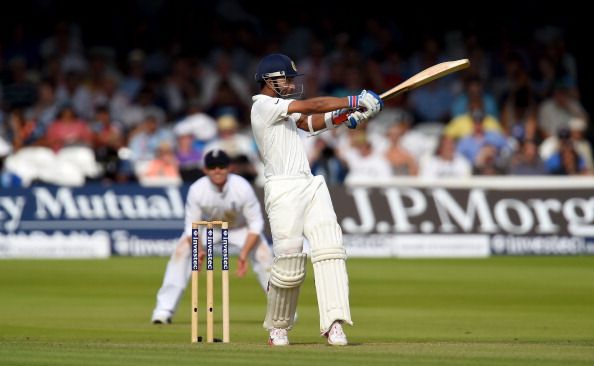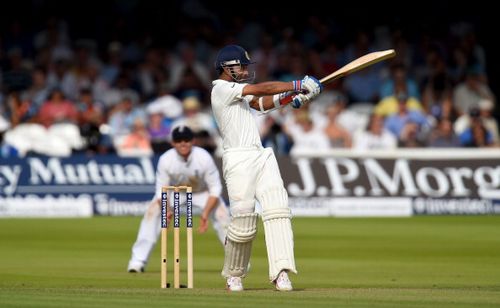
Will England be made to pay for not making the most of a golden opportunity?

“Be careful what you wish for 'Cause you just might get it”, so goes the lyrics of “When I Grow Up”, a famous single from the band The Pussycat Dolls. After moaning and whining to no end about the pitch that was produced at Trent Bridge for the first Test, England finally got what they wanted, a green pitch that was conducive to swing bowling.
They had a green pitch, one which made me wonder whether Wimbledon was still going on, or whether cows were going to be grazing there anytime soon. Jokes apart, the comments from pundits and players alike were that this was nothing like the usual Lord’s pitch. This was a green pitch that looked set to offer plenty of swing and carry for the English seamers who had to toil in the opening Investec Test for everything they got.
England got what they wanted
This was supposed to be hostile English conditions, in which the hosts were supposed to thrive. The fact that Alastair Cook won the toss and put India into bat meant that the hosts had first dibs on a seamer’s paradise. The hosts finally got what they wanted, favourable conditions and the perfect opportunity to test this relatively inexperienced Indian batting line-up and bowl them out cheaply. The stage was set, the audience was ready and all England had to do was stick to the basics and they would have held the upper hand in this crucial Test match.
But instead of rattling through the Indian batsmen like nine pins on a bowling alley, England’s bowlers proceeded to waste the new ball by bowling too short and too wide. An attack that is spearheaded by the leading wicket-taker in England and at Lord’s, was made to look toothless in conditions that favoured the bowling side. Although they changed their line and length after lunch, they still couldn’t get the job done as they let India record their highest first innings total in a Test at Lord's.
The game is far from done and England could yet win this match, but one thing that is evident from the first day’s play was that irrespective of the amount of pining for a good pitch, when you do get, you have to make the most of it. England certainly didn’t do that yesterday and the blame for that should go to not only the bowlers but also the captain as well.
Pujara deserves credit
One of the most important things a fast bowler should do on a seaming pitch is to let the ball do all the work. While variations are key on a flat track, they are nowhere near as important in swinging, seaming conditions. On a pitch that offered the seamers plenty of assistance, all England had to do was keep it simple. All they had to do was to make the batsman play at the ball. But, they failed to do that. While the efforts of Cheteshwar Pujara and Murali Vijay are certainly noteworthy, it was made easier by England’s bowlers’ insistence of bowling it wide.
While the ploy of bowling outside the off stump and letting the batsman fish for the delivery might have worked in the 1980s and 1990s, the current crop of Indian batsmen are far more patient and are more than happy to let the ball go. Pujara was testament to that as he showed superhuman levels of concentration and while all the credit might go to Rahane for the century, one shouldn’t forget the efforts the Saurashtra batsman who negated the swing early on and made it easier for the batsmen coming in.
Also, England’s ploy of bowling outside the off stump meant that the only way for a bowler to get a wicket was if the batsman nicked the ball. But since there was little danger, the batsman kept on leaving it, which frustrated the bowlers. It was only when the English targeted the stumps and bowled a good length that the wickets started to come.
Cook shows his limitations as a captain again
While the bowlers at least learnt from their mistakes after lunch and started pitching the ball in the right areas, the captain on the other hand didn’t and made the same mistakes he did in the opening Test. Treating a tail-ender as if he is a world-class batsman, following the ball with his field changes and his insistence on using the short ball as a weapon, even when all evidence pointed otherwise showed that Cook’s critics are certainly well within their rights to criticise him.
Pressure can get to even the best of players and that certainly seems to be the case with Cook. His lack of form with his bat, seems to be affecting his captaincy as well and that is one thing that doesn’t bode well for England. If his under-utilisation of Moeen Ali at Trent Bridge was baffling, the fact that the spinner was allowed bowl 14 overs in the first day at Lord’s in seamer-friendly conditions was even more puzzling.
While there is still a long way to go in this Test match, England certainly haven’t made the utmost use of favourable conditions. But the more worrying aspect for them will be Cook, who hasn’t had a good series so far, either as a batsman or as a captain. Cook got his wish, but he didn’t make the best use of it and England will be hoping that he strikes form with the bat soon, or they could be in for a long summer.